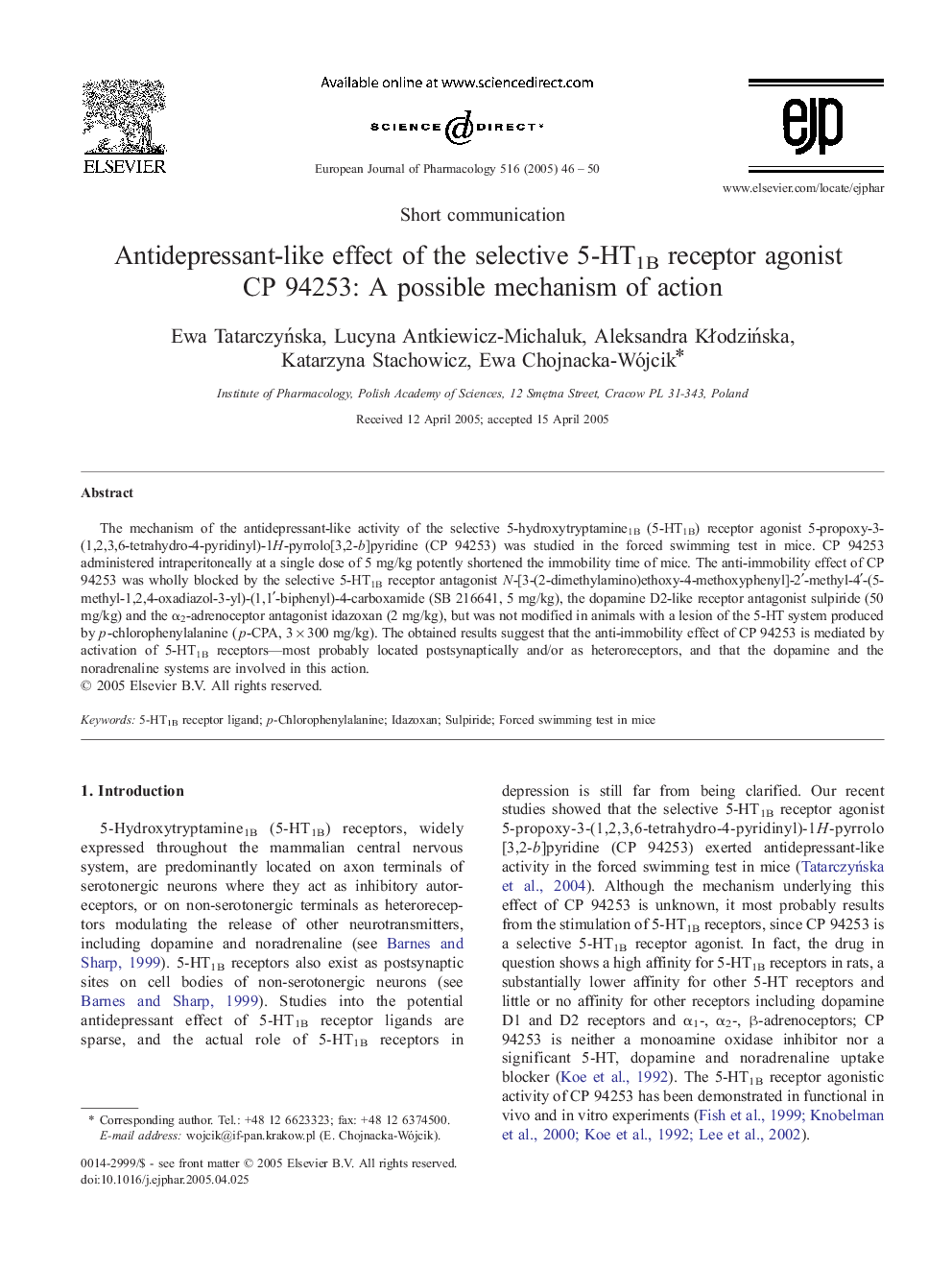| Article ID | Journal | Published Year | Pages | File Type |
|---|---|---|---|---|
| 9921290 | European Journal of Pharmacology | 2005 | 5 Pages |
Abstract
The mechanism of the antidepressant-like activity of the selective 5-hydroxytryptamine1B (5-HT1B) receptor agonist 5-propoxy-3-(1,2,3,6-tetrahydro-4-pyridinyl)-1H-pyrrolo[3,2-b]pyridine (CP 94253) was studied in the forced swimming test in mice. CP 94253 administered intraperitoneally at a single dose of 5 mg/kg potently shortened the immobility time of mice. The anti-immobility effect of CP 94253 was wholly blocked by the selective 5-HT1B receptor antagonist N-[3-(2-dimethylamino)ethoxy-4-methoxyphenyl]-2â²-methyl-4â²-(5-methyl-1,2,4-oxadiazol-3-yl)-(1,1â²-biphenyl)-4-carboxamide (SB 216641, 5 mg/kg), the dopamine D2-like receptor antagonist sulpiride (50 mg/kg) and the α2-adrenoceptor antagonist idazoxan (2 mg/kg), but was not modified in animals with a lesion of the 5-HT system produced by p-chlorophenylalanine (p-CPA, 3 Ã 300 mg/kg). The obtained results suggest that the anti-immobility effect of CP 94253 is mediated by activation of 5-HT1B receptors-most probably located postsynaptically and/or as heteroreceptors, and that the dopamine and the noradrenaline systems are involved in this action.
Related Topics
Life Sciences
Neuroscience
Cellular and Molecular Neuroscience
Authors
Ewa TatarczyÅska, Lucyna Antkiewicz-Michaluk, Aleksandra KÅodziÅska, Katarzyna Stachowicz, Ewa Chojnacka-Wójcik,
